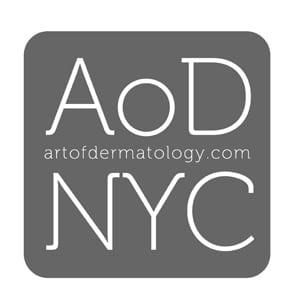Living in NYC is not exactly an ideal environment for your skin. You are constantly exposed to pollutants that may be more damaging to your skin than you know. These are a few things you should be aware of when it comes to pollution’s effects on your skin and how you can reduce your exposure to those harmful fumes and toxins.
How Does Living in the City Damage Your Skin?
If you are living in NYC, you are constantly exposed to car exhaust, industrial processes, microbe-filled subways and taxis, and cigarette smoke. In fact, the World Health Organization extrapolates that more than half of urban populations live in cities that exceed the WHO’s air quality guidelines by as much as sixfold. Chronic emotional stress has been proven to have an aging effect on skin. Many find that living in a city causes stress because of the busy lifestyle. Oxidative stress on skin cells can also come from air pollution and is known to be one of the main causes of skin aging. For example, studies have found that traffic-related air pollution can be a contributor to premature aging.
What Do Pollutants Do to Your Skin?
Air pollutants are microscopic particles that you might not visibly see or feel, but which have a damaging effect on skin health in addition to the better-understood effects on our lungs. Most people know that breathing polluted air is damaging, but fewer understand that pollution can be absorbed through the surface of the skin. Common skin conditions linked to pollution are clogged pores, acne, dry skin, and rashes or eczema. Luckily, there are many ways to prevent and treat pollution-related skin conditions.
Tips for Limiting Your Exposure to Pollutants
The first step to protecting your skin in a busy city such as NYC is to protect your home and create a clean environment.
Reduce Exposure Outside
When you are outside, you are exposed to many fumes and airborne pollutants. You can protect your skin by wearing a scarf and gloves to create a barrier between yourself and the pollutants you encounter. You should also wear sunscreen daily. Even though the sun itself might not be considered a pollutant, overexposure to UV rays has an equally damaging effect on your skin.
Stop Smoking
Smoking is a difficult habit to break but there are many health risks associated with cigarettes, so you should try to stop. When you stop smoking, you will look and feel better overall; this includes a more refreshed and youthful skin appearance. If your roommates or friends smoke, encourage them to stop as well. Secondhand smoke is just as dangerous if you personally do not smoke.
Purify Your Home
Surprisingly, much of your exposure to pollutants can happen inside. When cleaning your home, use non-toxic cleaning products that do not emit noxious fumes (which can cause damaging side effects). Keeping your home well-ventilated will also create a cleaner environment with pure air that won’t damage your skin. If you have pets, brush and bathe them regularly to reduce dander and other allergens from getting trapped in your home.
Schedule a Consultation
While living in New York City, it is impossible to completely block out pollutants, but there are many things you can do to significantly reduce your exposure. At Art of Dermatology, Dr. Krant offers many skin rejuvenation treatments and can give you personalized skincare tips to further refresh your skin. Schedule your consultation by calling us or filling out this online contact form.














Leave A Comment